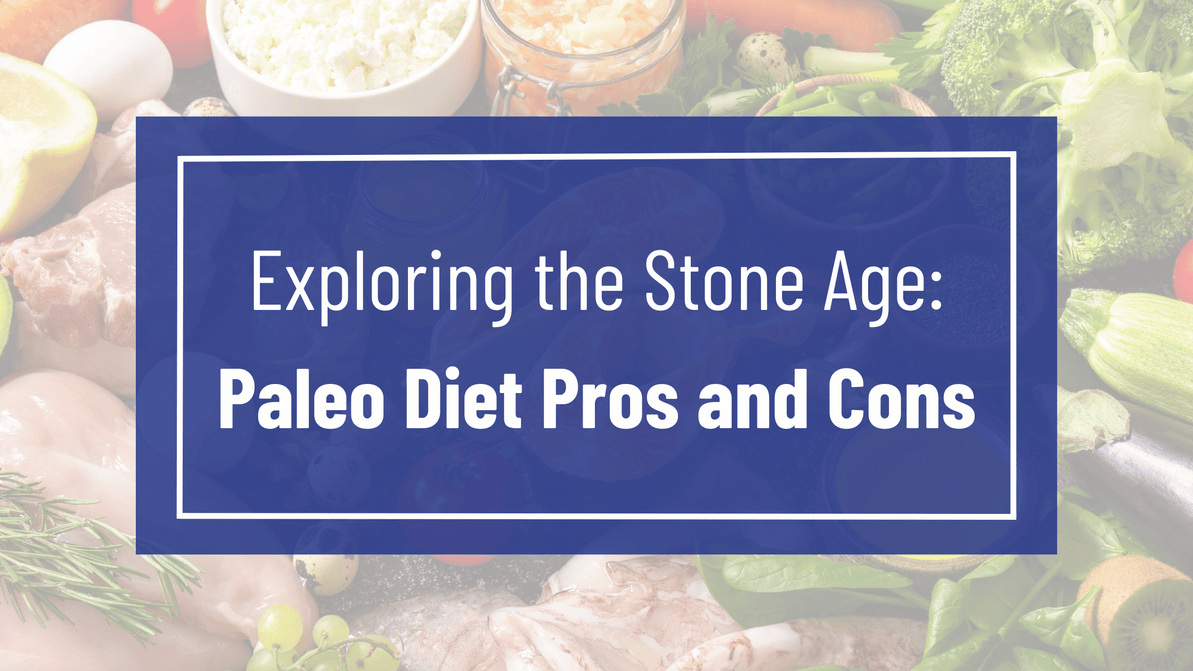Exploring the Stone Age: Paleo Diet Pros and Cons
The diet world never ceases to amaze. Just when you think you’ve heard it all, a new trend comes along. Enter the Paleo diet. Now, Paleo is not a new concept–some might even say it’s an ancient diet since it’s based on what our ancestors ate during the Stone Age. But the past few years have seen it growing in popularity, with people talking about the Paleo diet's pros and cons left and right.
The pro camp will tell you this diet will help you avoid diabetes, heart disease, and obesity. Some even say the Paleo diet is a solution for hormonal issues like PCOS, high inflammation, and more.
Opponents feel the diet cuts out too many food groups and can put you at risk for nutritional deficiencies. They also argue Paleo may not be the healthy diet it is advertised to be, and just because our ancestors ate this way doesn’t mean we should. Where’s the truth? We’ll try to answer this question and more.
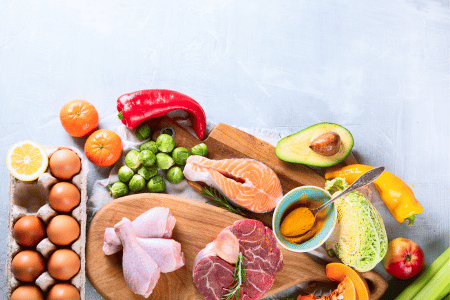
What is the Paleo diet?
The Paleo diet, also known as the Caveman diet, is based on what humans ate during the Paleolithic era—whole, unprocessed foods, such as:
- Meat (all types, including fish)
- Eggs
- Nuts
- Seeds
- Fruits
- Vegetables
While the list looks varied and healthy, the “forbidden” foods list can make Paleo look a little more challenging. You’ll need to avoid:
- Any types of grains—say goodbye to bread, pastries of all kinds, and even rice
- Dairy
- Legumes
- Corn
- Potatoes
- Peas
- Sugar
- Added salt
- Highly processed foods
Alcohol is also not exactly part of the Paleo diet, but some agree it can be consumed in moderation. You should, however, avoid drinks like beer, which is made from grains, as well as cocktails that contain added sugar.
In other words, anything unavailable to cave dwellers shouldn’t be on your menu either. Grains, corn, and potatoes are natural and whole, but they result from agriculture, which wasn’t available then. Dairy products are also the result of more modern processing techniques that did not exist during the Stone Age.
Your recipes should also be very simple. Again, think of what people in the Stone Age could do to cook their food. They didn’t have the means to get fancy, so they had to stick to basic, simple ingredients.
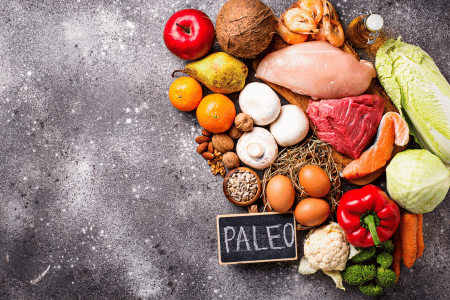
Paleo diet pros and cons
Eating a diet consisting only of whole, natural foods is bound to bring good results. But cutting out entire food groups, especially when you don’t have an underlying health condition, may be unnecessary and dangerous.
Pros
1. May help with weight loss
If you want to lose weight, the Paleo diet can be a good option. Most people report losing weight without cutting calories or restricting food portions, at least at first. If you look at the foods you’re removing, it’s easy to see why. You’re saying goodbye to junk food and excess sugar, and even reducing carbs.
Remember that excess of anything is bad, and you can eat too much, even on a Paleo diet. Listen to your hunger signals and try not to snack mindlessly if you want to avoid gaining weight instead of losing.
2. May help lower blood pressure and cholesterol
Studies show the Paleo diet could lower blood pressure and cholesterol. It may also help keep blood sugar levels stable. That’s because you’re removing most carbs and sugars from your diet, which can improve insulin sensitivity.
Doctors do issue a word of caution, though. Depending on what you eat, you may be putting yourself at risk for high cholesterol and high blood pressure. Remember, the Paleo diet allows you to eat any type of meat—even red, which is high in fat.
For the best results, aim again for balance. Try to choose various sources of meat, including poultry and especially fish, which will also boost your omega-3 intake.
3. High intake of protein, fiber, vitamins, and minerals
If there’s one thing everyone can agree on is that the Paleo diet can be very high in nutrients. You’ll be eating a lot of protein but also a lot of fiber, which is excellent for your gut health and can help with weight loss as well. Plus, all those fruits and veggies come with a myriad of vitamins and minerals.
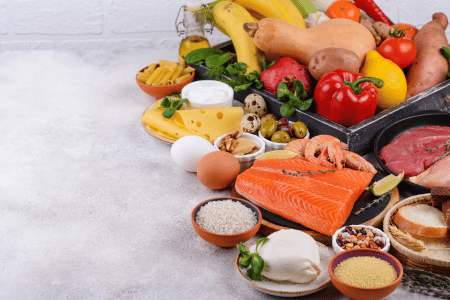
Cons
1. Removing entire food groups
Sometimes, eliminating foods from your diet is necessary. But when you’re taking out entire food groups, even though you have no allergies or other issues imposing it, you may do yourself a disservice. For example, one study showed participants on the Paleo diet had calcium levels 50% lower than those on a regular diet.
Whole grains, for instance, can be very healthy when eaten in moderation. They’re packed with vitamins such as thiamin, niacin, folate, and minerals such as iron and magnesium. They may also be beneficial for heart health, and they contain a lot of fiber.
You can still get plenty of fiber, vitamins, and minerals with Paleo, but you may need to pay more attention to what’s on your plate.
2. Could contain too many saturated fats
Paleo encourages the consumption of meat, including pork, beef, and lamb, which contains a lot of saturated fat. If you’re not careful about what you put on your plate, you may end up with an unhealthy fat ratio.
We’re not saying fat is bad—it has its role in our diets. But most people need more variety to stay healthy, so you’ll need to select your foods carefully.
3. Can be expensive and difficult to sustain
Eating a healthy, varied, and balanced Paleo diet can become very expensive very quickly. Many in the Paleo community recommend choosing organic to be even closer to how our Stone Age ancestors used to eat and have an even healthier lifestyle. While this is not mandatory, your diet will become a lot more expensive if you choose to do it.
4. Unknown long-term results
Unlike other popular diets, like keto, vegan, or Mediterranean, there are few studies regarding the long-term effects of a Paleo diet. And if you’re thinking, “Our ancestors ate it for a long time, so we do know,” you’re right, but there’s a twist.
We’re not genetically the same as our Paleolithic ancestors. And neither is the food we eat. All these changes mean our needs are different, and so is the nutritional profile of the food on our plates.
Plus, we don’t know the cholesterol or blood sugar levels of people living in the Paleolithic. We can make speculations, but nothing more. In short, we can’t expect to have the same results they did. We may be ok, and some people thrive while on Paleo. But this diet is not for everyone.
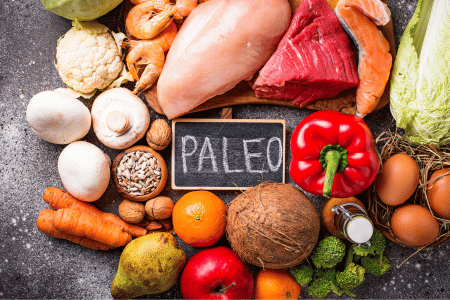
Can you eat Paleo if you’re vegan?
The short answer is: not really. Paleo is, by definition, a diet that includes meat. Cave dwellers ate it, so it will be on a traditional Paleo menu. In theory, you could try it, but the foods you’d be allowed to eat will be limited. You’d be left with only fruits, vegetables, nuts, and seeds.
And if you’re wondering about soy—this is a heated debate in the Paleo world. Some say it should not be allowed, as it is the result of more modern agriculture, just like grains and corn are. Plus, it is part of the legumes family, which is a “no” in the Paleo diet.
Some people approve of eating fermented soy products, like tempeh and tofu. The universal consensus remains, though, that soy products shouldn’t be part of Paleo.
Soy or no soy, a “vegan Paleo diet” will be highly challenging and limited, putting you at risk for nutritional deficiencies.
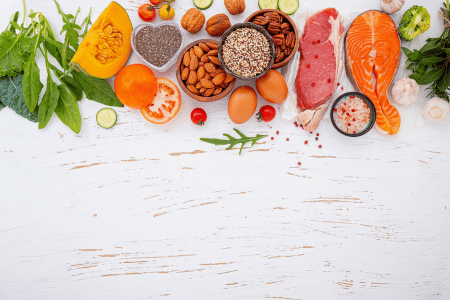
The bottom line
The Paleo diet tries to mimic the eating ways of our Paleolithic ancestors: nothing but meat, fruits, vegetables, nuts, and seeds. It can be a very healthy but also challenging lifestyle.
There are many Paleo diet pros and cons, and they’re all worth listening to and considering. Eating this way can help you lose weight and up your protein and fiber intake. It may help balance blood sugar levels, lower blood pressure and cholesterol, and help fight inflammation.
On the opposite side, you need to remember you’re removing important food groups. This will put you at risk for nutritional deficiencies and may be unhealthy in the long run. Plus, it’s easy to turn Paleo into an unhealthy diet if you make red meat a daily staple.
What are your thoughts on the Paleo diet? Have you tried it? Or do you want to? Join us on Facebook and let us know.
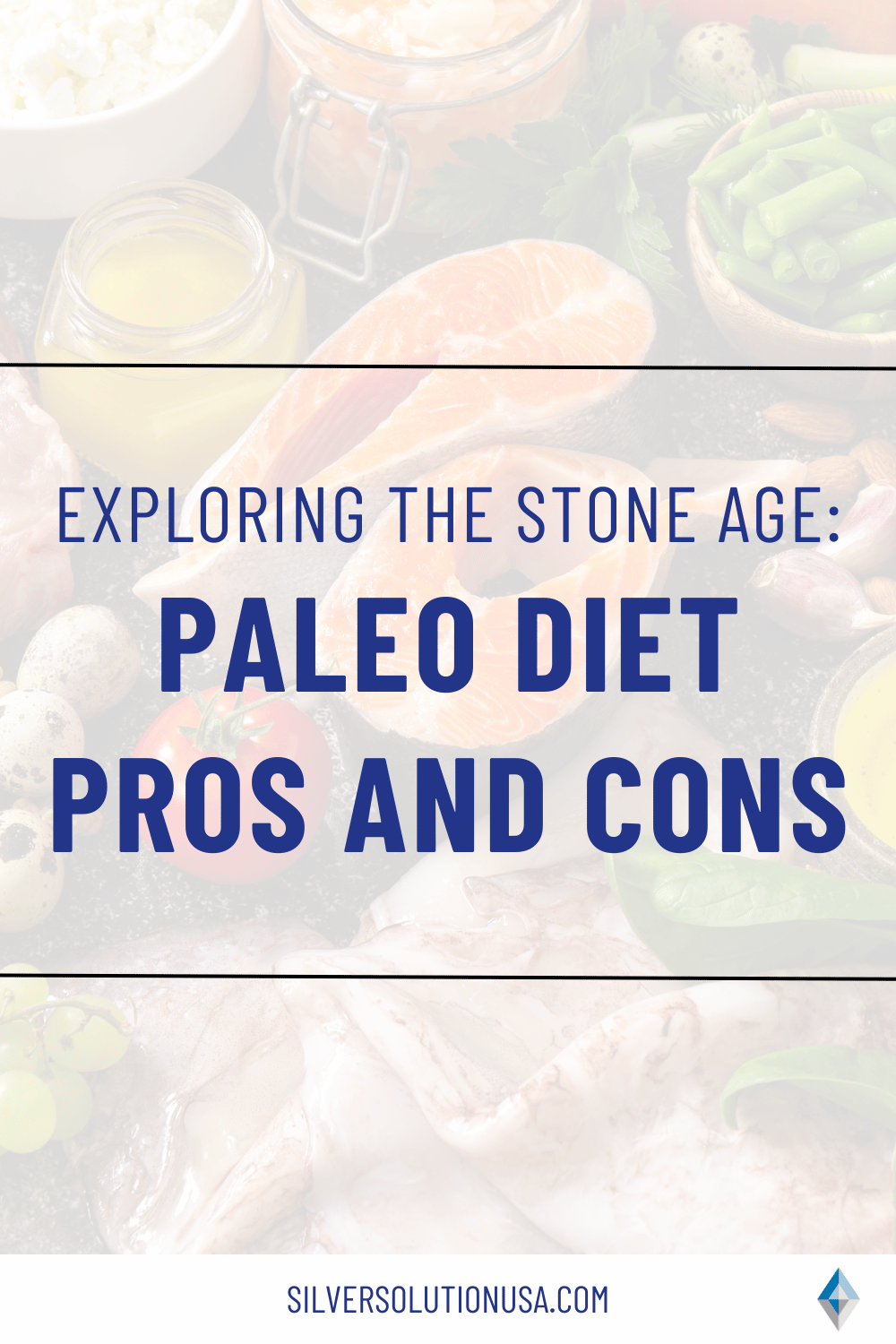
Health/Medical Disclaimer
This blog post does not provide health or medical advice. This blog post is for informational and educational purposes only and is not a substitute for professional health or medical advice. Before taking any actions based upon such information, we encourage you to consult with the appropriate medical and healthcare professionals. We do not provide any kind of health or medical advice. The use or reliance of any information contained on this blog is solely at your own risk.
Sources
https://www.ncbi.nlm.nih.gov/pmc/articles/PMC2787021/
https://www.nature.com/articles/nm.3150
https://pubmed.ncbi.nlm.nih.gov/17522610/
Recent Posts
-
Are sunscreen ingredients harmful?
Sunny days can bring a lot of fun. Going out for a swim, spending time in nature, or relaxing on the …18th Mar 2024 -
The Veggie Debate: Does Cooking Vegetables Destroy Nutrients and the Best Ways to Cook Them
Vegetables are one of the healthiest foods you can choose. Some people downright hate them, while so …4th Mar 2024 -
Best Foods for COVID Recovery and Prevention
A few years ago, a new virus took the world by surprise. COVID-19 may look like the flu on the surfa …19th Feb 2024

